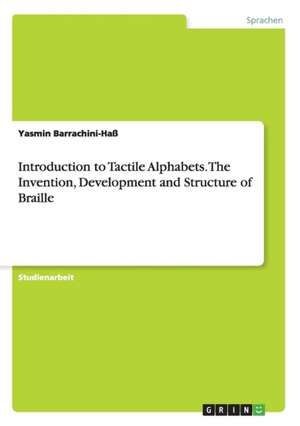Introduction to Tactile Alphabets. The Invention, Development and Structure of Braille
Autor Yasmin Barrachini-Haßde Limba Germană Paperback – 7 mai 2016
Preț: 80.89 lei
Nou
Puncte Express: 121
Preț estimativ în valută:
15.49€ • 15.93$ • 12.85£
15.49€ • 15.93$ • 12.85£
Carte tipărită la comandă
Livrare economică 15-21 februarie
Preluare comenzi: 021 569.72.76
Specificații
ISBN-13: 9783668197220
ISBN-10: 3668197229
Pagini: 32
Dimensiuni: 148 x 210 x 2 mm
Greutate: 0.06 kg
Ediția:1. Auflage
Editura: GRIN Publishing
ISBN-10: 3668197229
Pagini: 32
Dimensiuni: 148 x 210 x 2 mm
Greutate: 0.06 kg
Ediția:1. Auflage
Editura: GRIN Publishing
